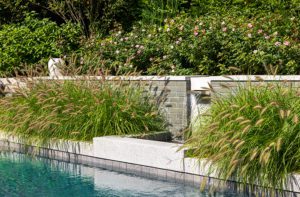Artist Katherine Houston: Beguiling Botanicals
December 18, 2017
Ceramic artist Katherine Houston uses eighteenth-century techniques to craft exquisitely rendered porcelain fruits, flowers, and vegetables.
Text by Regina Cole
Katherine Houston pulls a small knot of damp clay from a large wad and kneads it in her hands as she talks about her artistic journey. “As a child in Columbus, Ohio, I drew and made pottery pinch pots. I majored in art history and fine art in college,” she says. “But I could not do abstract expressionism.”
Or so she thought, anyway. As a college student, she recalls, “I sarcastically dashed off my idea of satire of the style, threw it away, and then was appalled when it won first prize in the student art show. My instructor had fished it out of the trash, and matted and framed the thing. I stopped doing art for twenty-five years.”
She rolls the clay into a sphere, makes a little pinch pot, then picks up a wooden rolling pin and flattens it into a tissue-thin disk. “It’s white clay, mined in South Carolina, and it is supple and smooth like your grandmother’s kid glove,” she says.
In Houston’s hands the disk becomes a leaf. She pinches the edges into ruffles, then gives the leaf a twist for natural torque. Fired, then painted, re-fired, and painted again—a process repeated as many as a dozen times—the pale-gray clay leaf will transform into a pretty porcelain one.
Porcelain is what brought Houston back to art. “My husband and I were traveling in London, and
I walked into a shop to inquire about what I thought were eighteenth-century ceramic fruits in the window,” she recalls.
Thus she discovered the porcelain sculpture of Anne Gordon, a twentieth-century blueblood British artist who made trompe l’oeil fruits, vegetables, leaves, cockatoos, and animals beloved by the cognoscenti, who used them to decorate mantels and dining tables. “When I realized that these fruits and veggies were new, I had an epiphany,” Houston says. “ ‘I want to do this!’ was all I could think of.
“So I met Anne Gordon, who imperiously said, ‘I would like to be known as the School of Eighteenth-Century Porcelain in the Twentieth Century, but you need more than one person to have a school. You shall be my student, and I will be your mentor.’ We became great friends while I started my own porcelain sculpture studio here in Boston.”
She says that she honors the spirit of Gordon, who died in 2007, by using only eighteenth-century colors in her sculptures. Her pieces depict fruits, vegetables, flowers, and a new line of what she calls Mirages: scenes worked into patterns that are designed to stand as display pieces. Mythology-inspired recent examples show Icarus tumbling to Earth and Persephone returning from the Underworld.
From the smallest peapod to fifty-two-inch triptychs made up of a cornucopia of produce, each piece is painstakingly detailed and faithful to its natural coloration. “More subtle,” is Houston’s definition of eighteenth-century hues. “No cadmium, no neon colors.”
She uses paint made in Dresden, Germany. Brushed on by hand in successive layers, with a firing between each layer, the colors become surprisingly complex. “Anne told me to only use seven colors,” she says, “but, in fact, I use 300. They are very intense colors, and on the finished piece, they will not bleach out, even in bright sunlight.”
When she launched her porcelain sculpture career in the early 1980s, Houston saw immediate commercial success as her designs were sold by Bergdorf Goodman, Neiman Marcus, Gump’s, Saks Fifth Avenue, and other upscale retailers. Her work found its way into Connecticut’s New Britain Museum of American Art and the Peabody Essex Museum in Salem, Massachusetts, and she lectured at museums and art institutions all over the country. Her work was also commissioned by the State Department to serve as official gifts. “I hired staff, was running this big operation until, in 2001, I said, ‘I’ve had it,’ ” she says. “Now, I only do one-of-a-kind things, and I work on -commission.”
She sells her pieces from her Boston studio, on her website, and at annual shows in New York and Baltimore. Despite the scaled-back effort, she is in her studio six days a week. “I love doing this,” she says. “I wake up and can’t wait to get into the studio to see how the colors came out.”
EDITOR’S NOTE: To see more of Katherine Houston’s work, visit katherinehouston.com.
Share
![NEH-Logo_Black[1] NEH-Logo_Black[1]](https://b2915716.smushcdn.com/2915716/wp-content/uploads/2022/08/NEH-Logo_Black1-300x162.jpg?lossy=1&strip=1&webp=1)














You must be logged in to post a comment.